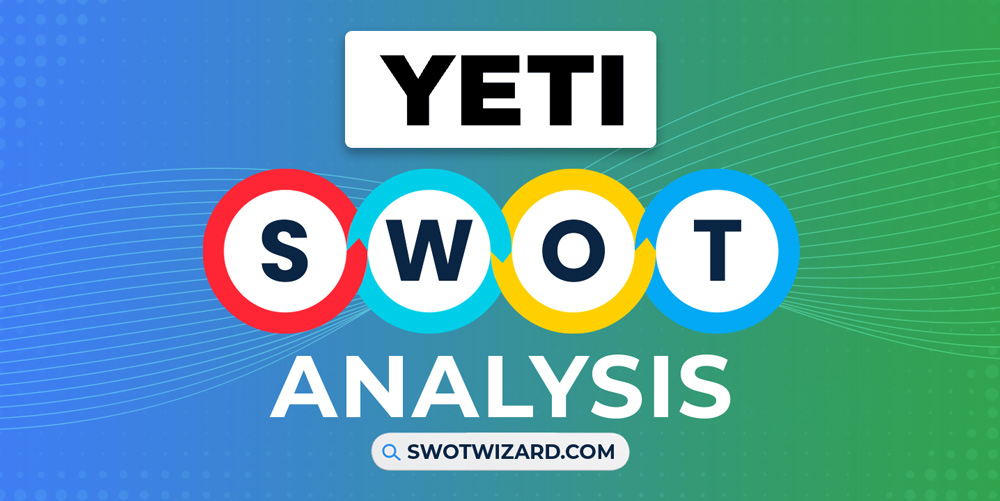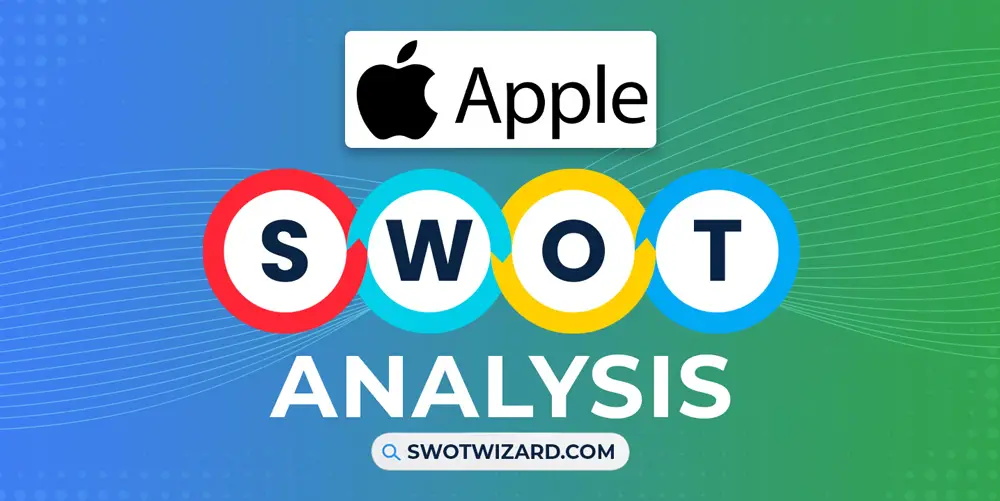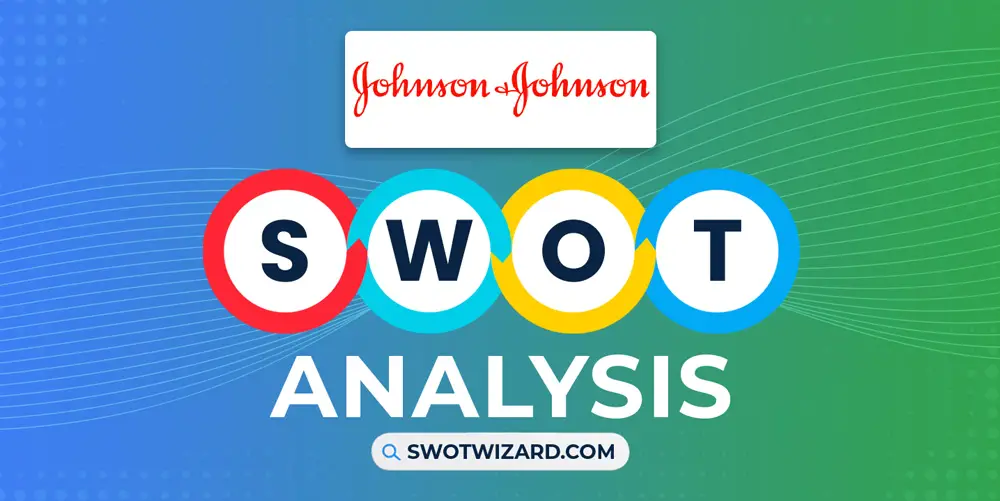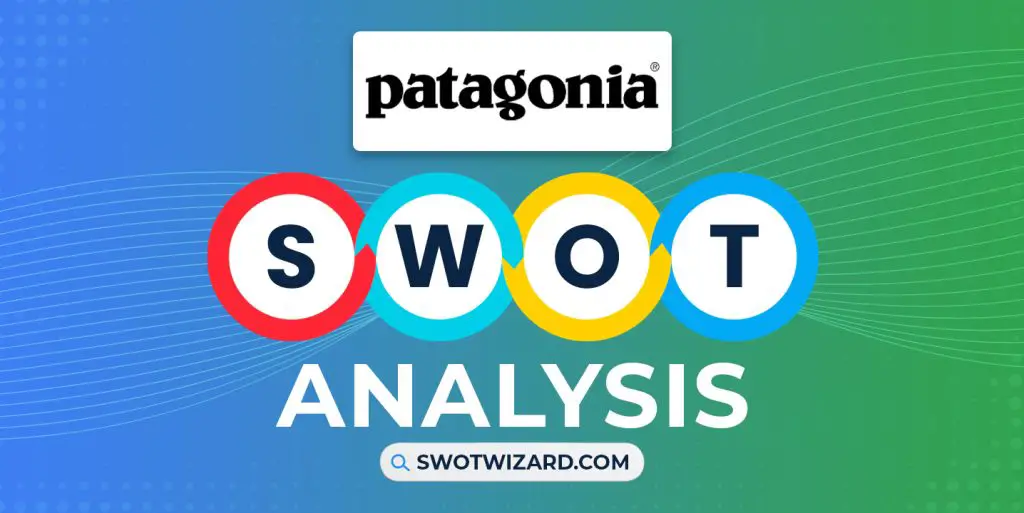Yeti is a common and popular name and a brand for adventurous people who love to hike or do outdoor activities in the USA or Canada. We will get to know about this company in this Yeti SWOT analysis.
Yeti: Company Overview
| Company | Yeti |
| Industry | Outdoor & Recreation |
| Founded | 2006 |
| Founders | Ryan, Roy Seiders |
| CEO | Matthew J. Reintjes |
| Headquarter | Austin, Texas, U.S. |
| No. of Employees | 922+ |
| Annual Revenue | $1.41 billion (FY 2022) |
| Website | yeti.com |
Just 2 decades ago, founded in 2006, Yeti started its journey and became an outdoor recreation product company best known for its durable coolers that rapidly gained popularity among outdoor adventurers.
Following significant growth milestones like retailer partnerships, product line expansions into drinkware and bags, and over $1.5B in annual revenue in 2023, Yeti has become a leader in innovative, premium-priced outdoor lifestyle gear.
Now with over 922 employees and an international business presence following recent company stores in Canada, Japan, Australia, and Europe, Yeti distributes its growing array of high-performance coolers, drinkware, and accessories in over 20,000 wholesale stores, leveraging its brand recognition built on quality craftsmanship and top-rated customer support.
Product & Services of Yeti
Coolers | Drinkware | Gear
Yeti Competitors
Igloo Products Corp. | RTIC Coolers | ORCA | Coleman Company | Pelican Products | OtterBoxFord
Did You Know?
Lego blocks inspired Yeti’s signature T-Rex lid system with a patented interlocking design. The founders were playing around with a box of Legos when conceptualizing a secure but easily removable lid.
Strengths – Yeti SWOT Analysis
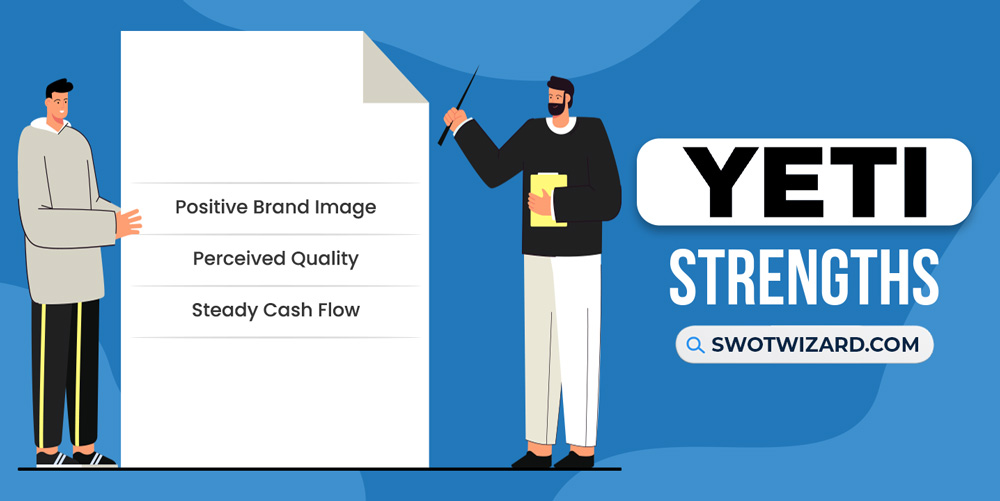
Positive Brand Image: The company has cultivated an extremely positive brand image among outdoor enthusiasts and hardcore fans. Its coolers have near legendary status for their durability and ice retention capabilities, as evidenced by a substantial, loyal consumer base and brand advocates like hunters, anglers, and outdoor influencers; grass-rooting brand appeal continues to drive awareness and sales.
Perceived Quality: Reviews consistently praise the premium quality and near indestructible construction of Yeti products like the Tundra coolers. If we look at those data, features like PermaFrost insulation and Rotomolded plastic shell signal durability and performance to customers. The 5-year warranty stands behind that quality promise, and the perception allows Yeti to command premium pricing.
Steady Cash Flow: Though private, Yeti’s consistent growth and expanding product catalog signal steady cash flow and healthy financials. According to SEC filings, revenue increased over 200% from 2016 to 2023, and the market reach has expanded from niche to mainstream without compromising perceived value, enabling Yeti to fuel innovation and connect with broader audiences.
Weaknesses – Yeti SWOT Analysis
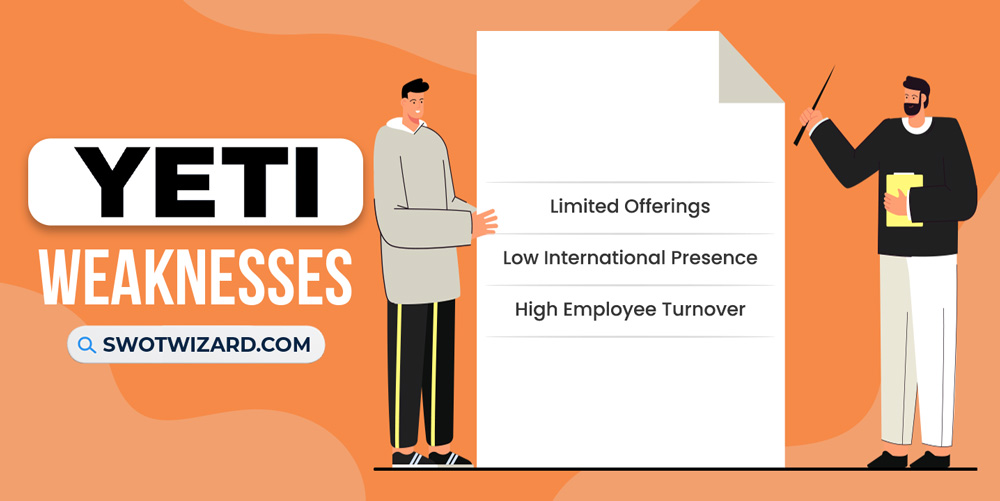
Limited Offerings: Though Yeti has expanded beyond hard coolers, its product portfolio focuses on outdoor gear and drinkware. Most sales still come from core products like the Tundra cooler. As a consumer brand, Yeti has room to grow into new categories and reach more lifestyle needs by applying its durable design ethos to new products.
Low International Presence: Given the brand’s emergence from Texas, most of Yeti’s sales and distribution happen in the United States and Canada. While some specialty retailers carry the brand overseas, international sales comprised less than 5% of the business, according to the latest figures. So, expanding globally can enhance growth as more of a global lifestyle brand.
High Employee Turnover: Reviews on Glassdoor indicate below-average employee satisfaction, with concerns over workload and lengthy hours. As a result, it may contribute to high turnover relative to competitors. It can be a problem in the long term, and maintaining company culture and employee satisfaction can be a priority area for an expanding brand seeking to retain talent.
Opportunities – Yeti SWOT Analysis

Product Diversification: While staying true to its outdoor gear roots, Yeti can leverage its durable design into new products like luggage, pet accessories, or other lifestyle categories. Surveys show current owners are interested in purchasing future products from Yeti, suggesting customer appetite for diversification.
Market Expansion: Domestically, the company can grow by tailoring products and marketing towards new demographics beyond the current male-skewed fanbase. Internationally, establishing sales channels overseas holds promise, outdoor recreation is a $133.05B global market according to 2023 figures.
Strategic Partnerships: As a producer of different categories and product lines, Yeti relies heavily on specialty stores for distribution. Strategic partnerships with mass retailers like Costco or REI and targeted advertising could further elevate mainstream presence. If we look at past partnerships, Cooler sales surged over 189% the year after partnering with Dick’s Sporting Goods.
Threats – Yeti SWOT Analysis
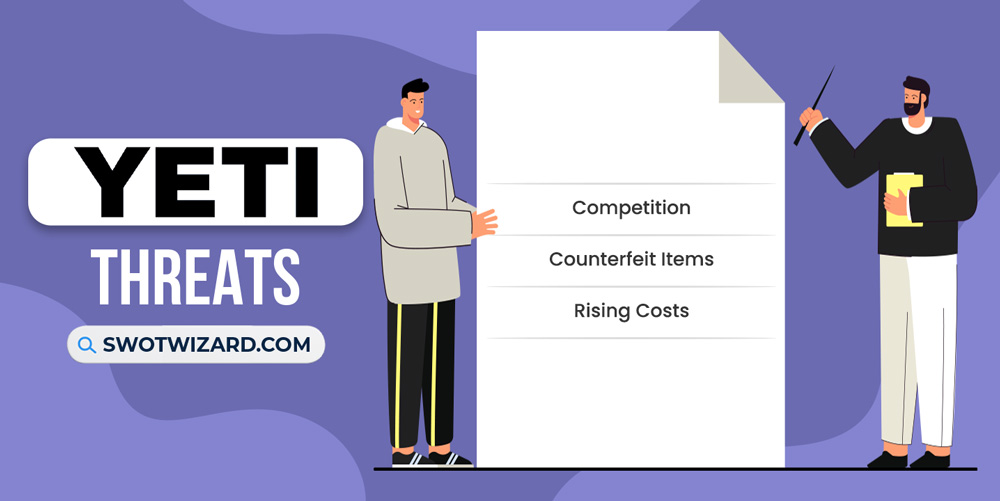
Competition: The company ignited the premium cooler market, but competitors like RTIC and Orca have followed with durable, lower-cost alternatives. Besides, large brands like Igloo and Coleman also command cooler market share. As a result, maintaining perceived value and quality differences is imperative amid this growing competition.
Counterfeit Items: As with any other famous brand or company, Yeti’s brand popularity has led to counterfeit products seeking to piggyback off its trademark look and feel. As a result, reports emerged in 2023 of fake Yeti items using inferior materials being sold online and at flea markets. Protecting trademarks and supply chains helps mitigate this threat, and it must be done.
Rising Costs: From raw materials to fuel and transportation, Yeti faces input cost pressures, especially in its hard goods lineup. As a result, Prices rose 8% in 2023 amid inflation, and keeping costs balanced with perceived value is vital to avoid brand dilution if prices rise too far beyond competitors.
[Bonus Infographic] SWOT Analysis of Yeti
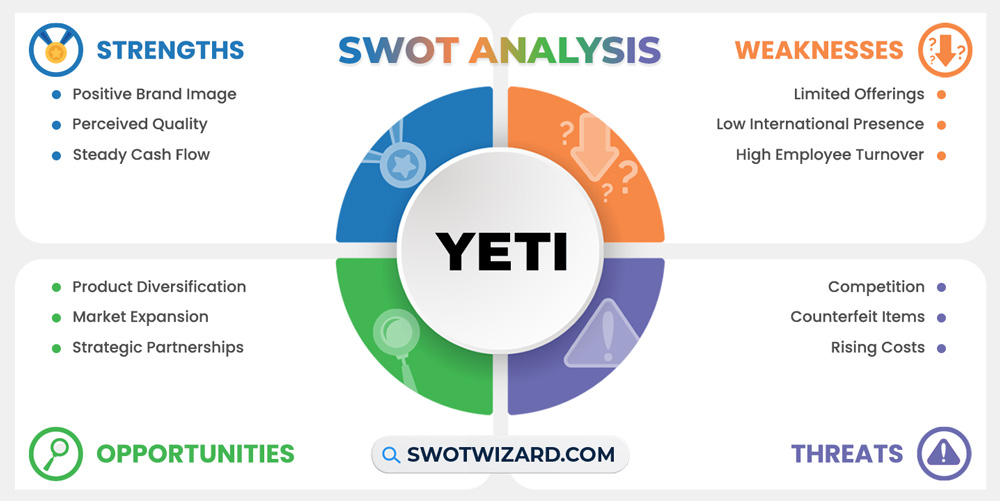
Recommendations for Yeti
Here are some recommendations for the Yeti company;
- Leverage durable design ethos into new outdoor lifestyle categories like apparel, gear bags, pet products, or accessories for growth.
- Prioritize Europe and APAC for sales/distribution channels to expose Yeti products to international consumers organically.
- Invest in backend tech for customization options, improved delivery timing guarantees, and CRM for loyalty and retention efforts.
- Study potential cost savings, sustainability impact, lead time compression, and quality control benefits of localized manufacturing compared to offshored production of hard goods.
Frequently Asked Questions (FAQs)
Is YETI an international company?
No, YETI is not an international company.
Who is the largest shareholder of YETI?
Capital Research Global Investors is the largest shareholder of YETI.
Final Words on Yeti SWOT Analysis
Yeti possesses significant brand strength and growth potential as a designer of premium outdoor products, though not without facing competitive threats and strategic imperatives. The company can leverage core advantages like product quality and customer loyalty to fuel expansion into new categories, markets, and geographies. Pursuing selective diversification and innovation, improving international presence, and doubling down on customer experience can help Yeti secure its positioning.
References
- Wikipedia contributors. (n.d.). Yeti. Wikipedia.

